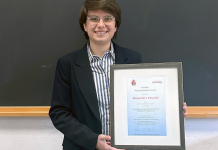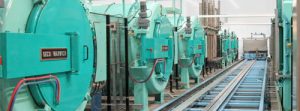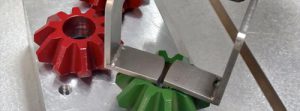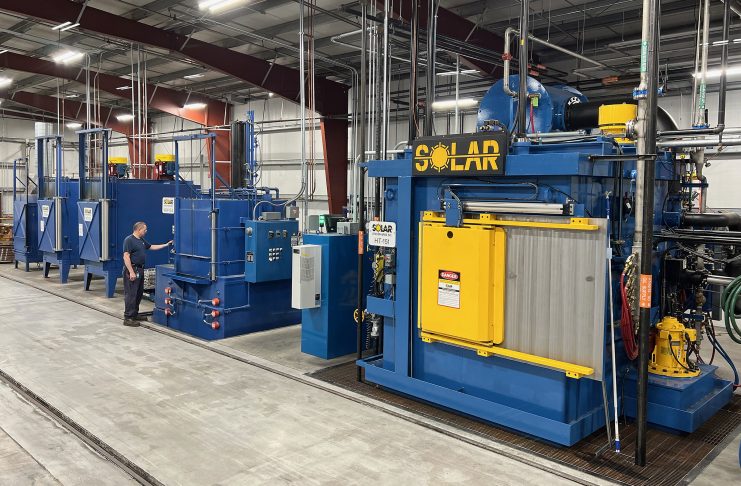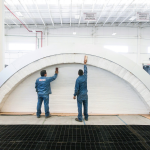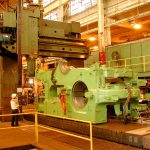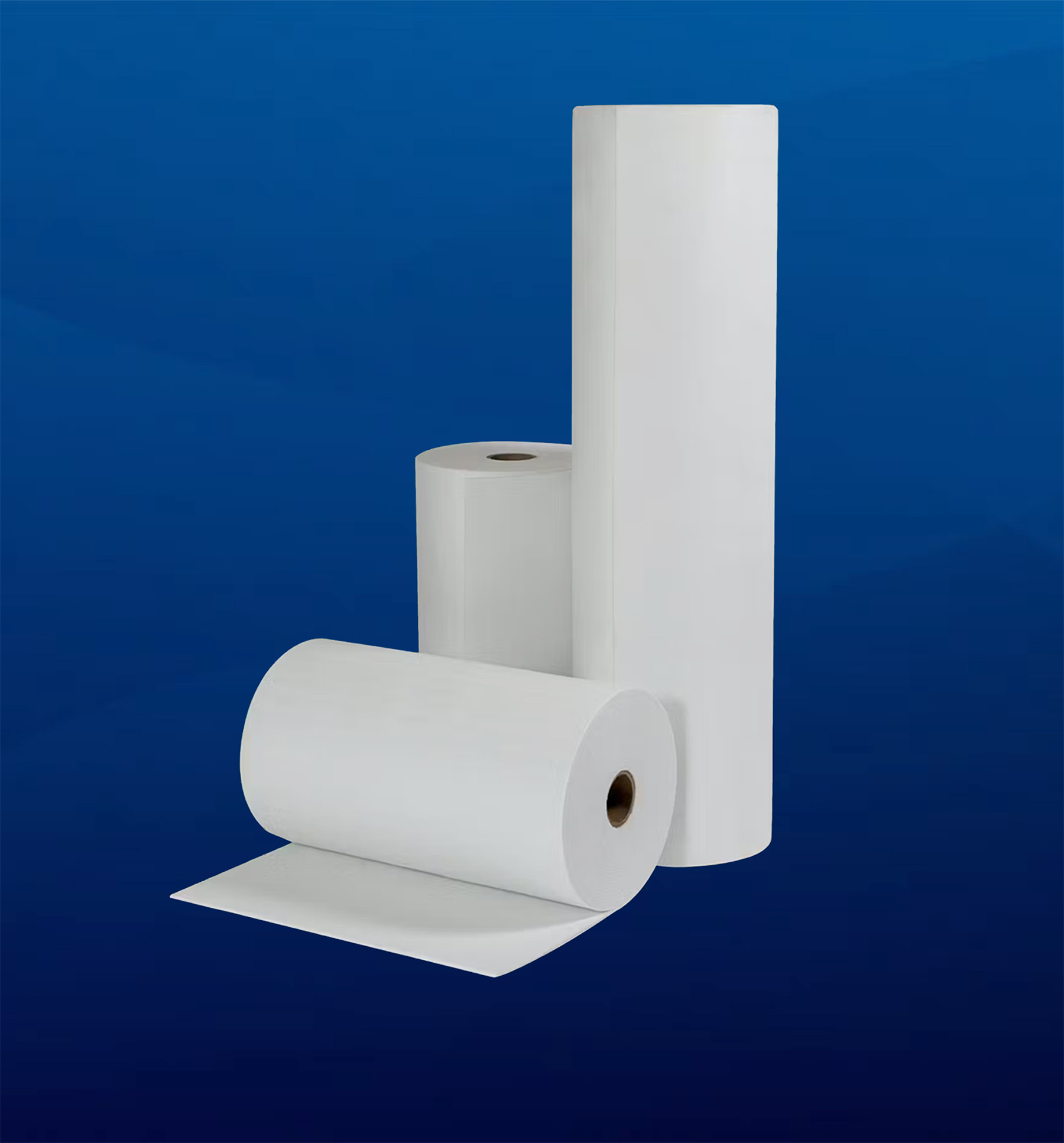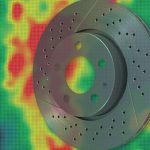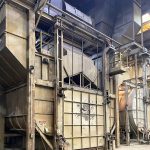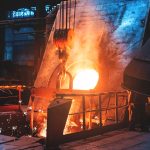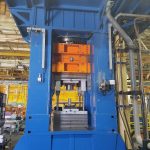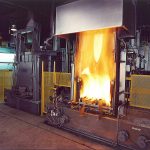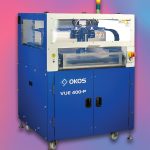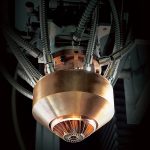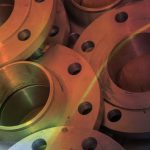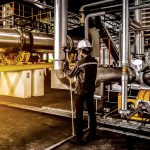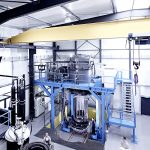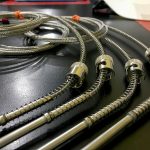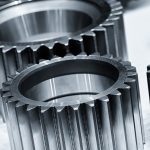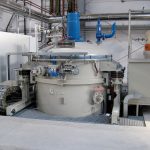Effects of the sintering process on Al2O3 composite ceramics
The sintering process can improve the microstructure of Al2O3 composite ceramics and enhance their comprehensive properties, but the effects of the sintering process on...
Optimal fabrication of a thin-film thermocouple using Alumel/Chromel junctions
Thin-film thermocouple (TFTC) technology is a novel measurement method that produces a thermocouple sensor during the deposition process, even though it is a complex...
Reducing time and cost of heat treatment post-processing of AM Ti6Al4V
The unique microstructure of Ti6Al4V produced through laser powder bed fusion (LPBF) displays high-tensile strength with low elongation in the as-built state. To obtain...
Ceramic fiber: High temperature insulation solution
Ceramic fiber is essential in various industries involving high-temperature operations. It offers superior thermal resistance for protecting structures, equipment, and machinery from steel and...
Nitrogen gas quenching pressure effect on BS S155 alloy steel in vacuum furnace
The production of metal and alloy products requires the use of heat treatment. During the heat-treatment process, quenching is a crucial step. The quenching...
The role of photo chemical etching in thermal management
The photochemical etching (PCE) process is distinguished by its capacity to fabricate metal parts with unparalleled accuracy. This process sidesteps the typical stresses and...
Demand for forged parts spurs drive to rebuild, automate equipment
Today, global demand for rebuilt forging equipment is surging, driven in part by a dramatic rise in the need for military ordnance spurred by...
Experimental validation of high-spatial resolution of two-color optical fiber pyrometer
Taking non-contact temperature measurements in narrow areas or confined spaces of non-uniform surfaces requires high spatial resolution and independence of emissivity uncertainties that conventional...
Insulation paper: Exploring a versatile thermal solution
Insulation paper is a thin, flexible, high-temperature material used in industrial processing applications where heat management is critical. It provides thermal protection up to...
Experimental research of a small-scale industrial furnace with regenerative disc-flame burners
Regenerative combustion technology has many advantages such as fuel saving, high combustion efficiency and low emission, and it has been widely used for large-scale...
Finite element modeling and simulation of vacuum brazing processes
Vacuum brazing is a black box process, so component distortion that occurs during heat treatment is difficult to prove experimentally. Thus, a novel FE-model...
Case study: Improving cooling tunnel performance
The Mt. Holly, South Carolina, smelting facility of global producer Century Aluminum houses casting equipment to process nearly 230,000 metric tons of material into...
Reimagining the steel production process
Steel has a major impact on everyone’s lives and our economy. It is crucial to cars, trucks, airplanes, buildings, and more. However, there is...
Investigations on the tooth root bending strength of larger-sized, induction-hardened gears
Surface hardening is an economical and technological alternative to case hardening. This is especially true for larger-sized gears. Due to the necessary high case-hardening...
10 steps for accelerating thermal processing decarbonization
Companies throughout the thermal-processing sector are under increased pressure to meet CO2 emission reduction goals, particularly net-zero emissions, by 2050 or sooner. At the...
Balancing a plant security profile
In today’s technology-driven world, where cyber threats dominate headlines and organizations invest significant resources in safeguarding their OT and IT infrastructure from digital threat...
DFARS, NIST SP 800-171, and CMMC 2.0 compliance
As a heat treater, if you are providing services or products to a Department of Defense (DoD) contractor, a downstream supplier, or fall anywhere...
Photo-chemical etching: A perfect process for heat exchanger production
Heat exchangers play a crucial role in various industrial applications, from power generation and automotive systems to HVAC systems and aerospace technology. The efficiency...
Selecting the right stretch forming equipment
For manufacturers, striving to increase profitability while expanding their capabilities and improving their processes, adding stretch forming to their repertoire may be the answer.
Stretch...
Controlling nitrided layers and enhancing predictability of nitriding process with metallography
Nitriding is the thermochemical process for producing surface layers in ferrous alloys, such as steels and cast irons used for making various mechanical components...
Integrating 3D printing into prototyping and production scenarios
At the recent TCT 3Sixty event in Birmingham, England, 3DPRINTUK ran a competition offering vouchers to be used against the cost of future 3D...
Optimizing forging machine productivity, longevity
As the forging industry’s most experienced maintenance staff and equipment operators retire, keeping legacy machines producing at full capacity is increasingly difficult. When new...
Aerospace Forging Market: An Avenue of Opportunities
Forging is a manufacturing process that has come a long way in the last century. In simple terms, forging is a process of shaping...
6 Benefits of AR in manufacturing
Manufacturers are increasingly incorporating augmented reality in their digital transformation strategy. Augmented reality provides a multiplier effect for improving the efficiency and quality of...
Inductive heating and flow chemistry: A perfect synergy of emerging enabling technologies
Inductive heating has developed into a powerful and rapid indirect heating technique used in various fields of chemistry but also in medicine. Traditionally, inductive...
Using polymer quenchants in an integral quench furnace
There have recently been several inquiries regarding the use of a polymer quenchant in a sealed or integral quench furnace. There are several drivers...
Advanced SAM validates integrity of diffusion bonds
Industries with demanding metal-bonding applications are increasingly relying on diffusion bonding, an essential joining method for achieving a high-purity interface between two similar or...
Advancements in powder DED
Powder DED, or directed energy deposition, has become a useful and economical tool within the world of metal-based additive manufacturing. Advancements within the process...
The effects of sintering temperature and atmosphere on stainless steel
So far, unlike metal injection molding (MIM), conventional powder metallurgy technology (PM) has not been regarded as a method for producing structural elements from...
10 tips to ensure accurate thermocouple measurement
Careful selection and installation of temperature sensors can ensure accurate sensor performance, which in turn improves product quality and production efficiency.
1: Select the Correct...
Carburized steel mechanical properties: Bending ultimate and impact strength
Editor’s note » This is part three of a three-part series on carburized steel mechanical properties.
In Part 2, it was determined that a test...
Effect of heat treatment on some titanium alloys used as biomaterials
Titanium-based alloys are constantly improved to obtain properties suitable for their use. Improving titanium alloys is very important for performing alloys without side effects....
Soaring demand for purified graphite spurs need for high-volume furnaces
The global demand for graphite is surging and expected to continue for decades, driven by the broad use of graphite for a range of...
Potential of nitrogen atomized alloy 625 in the powder bed fusion laser beam process
Powder-based metal additive manufacturing processes like powder bed fusion — laser beam use gas-atomized metal powders as feedstock material. Typically, for nickel-based alloys such...
Carburized steel mechanical properties: Bending ultimate and impact strength, test bars vs. actual parts
Editor’s note » This is part two of a three-part series on carburized steel mechanical properties.
In part one, it was determined the carburized case...
Understanding pyrometry technology is key to proper use
I teach pyrometry courses throughout the year and, when I do, I include a thermocouple tutorial video from YouTube. In this video the function...
The PLC-based industrial temperature control system: Design and implementation
Targeting the problem of slow response and low accuracy of the automatic temperature control system for material processing and boiler heating, a new design...
Carburized steel mechanical properties: Case tensile strength
Editor’s note » This is part one of a three-part series on carburized steel mechanical properties.
Carburizing is a mature heat-treating process commonly used for...
A new low-pressure carburizing solution in a pit vs. traditional pit carburizing methods
Pit Low Pressure Carburizing (LPC) for case hardening of large gears is a new approach to a traditional technology. Today’s manufacturing environment demands process,...
Mechanical properties and thermal conductivity of lightweight and high-strength carbon-graphite thermal insulation materials
Thermal insulation composites are widely used in civil and military applications; however, it is difficult to achieve the synergy of multiple technical objectives such...




